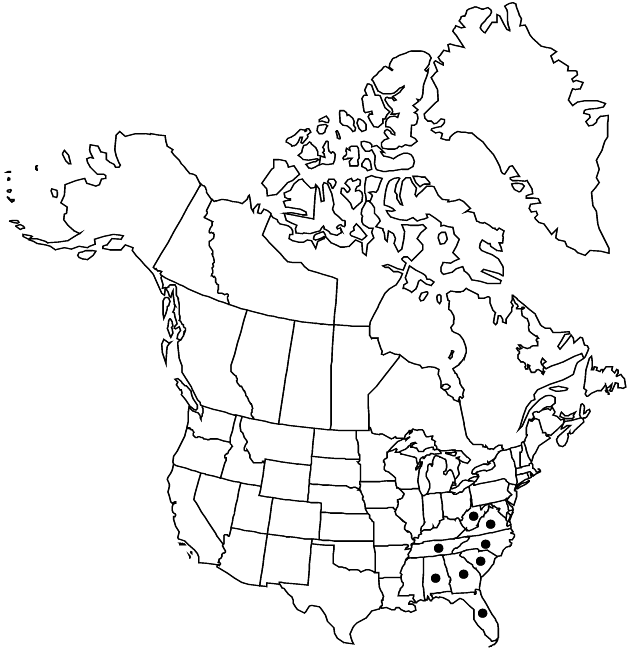Difference between revisions of "Rudbeckia fulgida var. spathulata"
Rhodora 59: 298. 1958.
Common names: Orange coneflower
Endemic
Basionym: Rudbeckia spathulata Michaux Fl. Bor.-Amer. 2: 144. 1803
FNA>Volume Importer |
imported>Volume Importer |
||
| (2 intermediate revisions by 2 users not shown) | |||
| Line 8: | Line 8: | ||
}} | }} | ||
|common_names=Orange coneflower | |common_names=Orange coneflower | ||
| + | |special_status={{Treatment/ID/Special_status | ||
| + | |code=E | ||
| + | |label=Endemic | ||
| + | }} | ||
|basionyms={{Treatment/ID/Basionym | |basionyms={{Treatment/ID/Basionym | ||
|name=Rudbeckia spathulata | |name=Rudbeckia spathulata | ||
| Line 51: | Line 55: | ||
|publication title=Rhodora | |publication title=Rhodora | ||
|publication year=1958 | |publication year=1958 | ||
| − | |special status= | + | |special status=Endemic |
| − | |source xml=https:// | + | |source xml=https://bitbucket.org/aafc-mbb/fna-data-curation/src/2e0870ddd59836b60bcf96646a41e87ea5a5943a/coarse_grained_fna_xml/V19-20-21/V21_113.xml |
|tribe=Asteraceae tribe Heliantheae | |tribe=Asteraceae tribe Heliantheae | ||
|subtribe=Asteraceae (tribe Heliantheae) subtribe Rudbeckiinae | |subtribe=Asteraceae (tribe Heliantheae) subtribe Rudbeckiinae | ||
Latest revision as of 20:08, 5 November 2020
Stems glabrous or sparsely strigose (hairs spreading). Leaves: basal blades mostly narrowly oblanceolate, 0.5–2 cm wide, lengths to 2 times widths, bases attenuate, margins entire, serrate or dentate, faces sparsely strigose; cauline usually petiolate, rarely sessile, blades oblanceolate to broadly spatulate or pandurate, notably smaller distally, bases attenuate, margins entire or serrate, faces moderately hairy. Phyllaries spreading to reflexed, 0.5–1 × 0.2–0.5 cm, pilose abaxially, glabrous adaxially. Receptacles 10–14 mm diam.; palea margins ciliate, faces glabrous. Ray florets 10–16; laminae 15–25 mm.
Phenology: Flowering late summer–fall.
Habitat: Wet woodlands, meadows, and clearings
Elevation: 30–200 m
Distribution

Ala., Fla., Ga., N.C., S.C., Tenn., Va., W.Va.
Discussion
Selected References
None.
Lower Taxa
None.